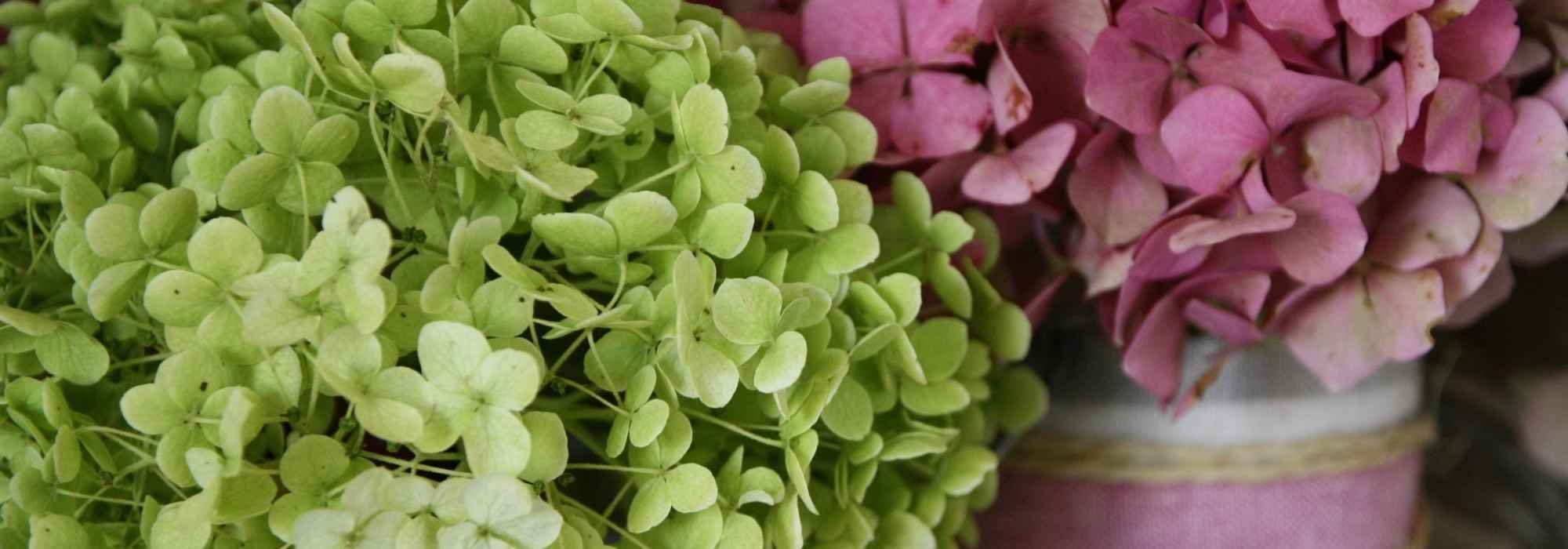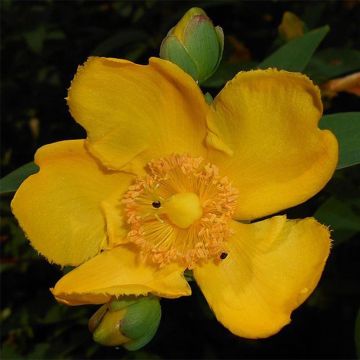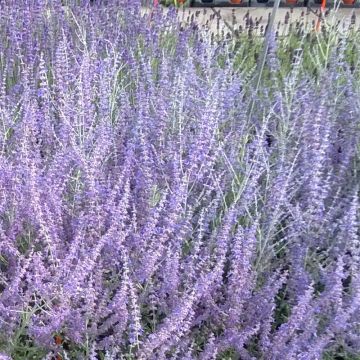

Hydrangea arborescens Candybelle Sorbet
Hydrangea arborescens Candybelle Sorbet
Hydrangea arborescens Candybelle® Sorbet ('Hyso22')
Smooth Hydrangea, Wild Hydrangea, Sevenbark
Special offer!
Receive a €20 voucher for any order over €90 (excluding delivery costs, credit notes, and plastic-free options)!
1- Add your favorite plants to your cart.
2- Once you have reached €90, confirm your order (you can even choose the delivery date!).
3- As soon as your order is shipped, you will receive an email containing your voucher code, valid for 3 months (90 days).
Your voucher is unique and can only be used once, for any order with a minimum value of €20, excluding delivery costs.
Can be combined with other current offers, non-divisible and non-refundable.
Home or relay delivery (depending on size and destination)
Schedule delivery date,
and select date in basket
This plant carries a 24 months recovery warranty
More information
We guarantee the quality of our plants for a full growing cycle, and will replace at our expense any plant that fails to recover under normal climatic and planting conditions.
Would this plant suit my garden?
Set up your Plantfit profile →
Description
Hydrangea arborescens Candybelle® Sorbet ('Hyso22') is a new variety of hydrangea from the Candybelle collection, ideal for a terrace or a small garden. Not very tall, but not devoid of a certain majesty, this bush has sturdy stems that carry its large flowers without weakening and is adorned with bright green foliage. Its large frothy inflorescences in shades of strawberry pink are decorative throughout the summer. The bush remains beautiful, even when soaked with rain. A wonderful hydrangea, as resplendent as it is easy to grow!
Hydrangea arborescens, also known as Smooth Hydrangea, belongs to the large Hydrangeaceae family. This botanical species native to the Southeastern United States is less demanding in terms of shade and soil than its Asian counterparts, and therefore very easy to grow in any moist and supple soil. It has given rise to numerous hybrid varieties that prove to be excellent garden shrubs.
Hydrangea arborescens Candybelle® Sorbet ('Hyso22') is a hardy plant that reliably blooms even after cold winters, on the new shoots of the current year. It can be planted in colder regions, as it renews its flower buds throughout the summer and is not afraid of spring frosts. It develops sturdy and ramified stems, forming a bush about 1m (3ft) tall and 90cm (35in) wide, a perfectly adapted size for cultivation in pots or containers. Flowering begins in early July and continues until September. It takes the form of large globular inflorescences called corymbs, which can measure up to 20cm (8in) in diameter. Each one is made up of numerous small flowers called florets. Each floret has 3 to 4 sepals that are pink-red in colour, lightening over time. The foliage consists of beautiful single leaves, 10 to 12cm (4 to 5in) long, wide and ovate, with attractive wavy edges, in a vibrant green colour. The leaves are deciduous, turning yellow before falling in autumn. Hydrangeas can live for more than 50 years.
If you like small, floriferous, robust hydrangeas that are easy to grow in any good garden soil, Candybelle Sorbet is the one for you! If your decor is more contemporary, or if you have a small city garden, this moderately sized shrub will add a romantic and natural touch. Candybelle Sorbet adds life to any partially shaded area, on a terrace or in the garden, whether placed individually, in a small hedge, or in a group of 3 plants. Plant a small border of boxwood or Lonicera nitida 'Elegant' with evergreen foliage, to enhance its large flowers. It can also be surrounded by hellebores and perennial fuchsias that complete the range of colours. Finally, cut its flowers to make charming bouquets!
Plant habit
Flowering
Foliage
Botanical data
Hydrangea
arborescens
Candybelle® Sorbet ('Hyso22')
Hydrangeaceae
Smooth Hydrangea, Wild Hydrangea, Sevenbark
Cultivar or hybrid
Other Hydrangea arborescens
View all →Planting and care
It requires a sunny or lightly shaded location, and ordinary garden soil that is deep, loose, enriched with compost, not excessively chalky or slightly acidic, and does not dry out too much in summer. Plant in deeply worked soil. A good base fertiliser (horn or dehydrated blood) will promote the establishment of your plant and nourish it without the risk of burning. The plant is highly perpetual, so you can regularly remove faded flowers in summer.
At the end of summer, leave the large dry umbels on the plant as they will protect the terminal shoots in winter. Remove the dried flowers after the spring frosts.
Planting period
Intended location
Care
Planting & care advice
This item has not been reviewed yet - be the first to leave a review about it.
Similar products
Haven't found what you were looking for?
Hardiness is the lowest winter temperature a plant can endure without suffering serious damage or even dying. However, hardiness is affected by location (a sheltered area, such as a patio), protection (winter cover) and soil type (hardiness is improved by well-drained soil).

Photo Sharing Terms & Conditions
In order to encourage gardeners to interact and share their experiences, Promesse de fleurs offers various media enabling content to be uploaded onto its Site - in particular via the ‘Photo sharing’ module.
The User agrees to refrain from:
- Posting any content that is illegal, prejudicial, insulting, racist, inciteful to hatred, revisionist, contrary to public decency, that infringes on privacy or on the privacy rights of third parties, in particular the publicity rights of persons and goods, intellectual property rights, or the right to privacy.
- Submitting content on behalf of a third party;
- Impersonate the identity of a third party and/or publish any personal information about a third party;
In general, the User undertakes to refrain from any unethical behaviour.
All Content (in particular text, comments, files, images, photos, videos, creative works, etc.), which may be subject to property or intellectual property rights, image or other private rights, shall remain the property of the User, subject to the limited rights granted by the terms of the licence granted by Promesse de fleurs as stated below. Users are at liberty to publish or not to publish such Content on the Site, notably via the ‘Photo Sharing’ facility, and accept that this Content shall be made public and freely accessible, notably on the Internet.
Users further acknowledge, undertake to have ,and guarantee that they hold all necessary rights and permissions to publish such material on the Site, in particular with regard to the legislation in force pertaining to any privacy, property, intellectual property, image, or contractual rights, or rights of any other nature. By publishing such Content on the Site, Users acknowledge accepting full liability as publishers of the Content within the meaning of the law, and grant Promesse de fleurs, free of charge, an inclusive, worldwide licence for the said Content for the entire duration of its publication, including all reproduction, representation, up/downloading, displaying, performing, transmission, and storage rights.
Users also grant permission for their name to be linked to the Content and accept that this link may not always be made available.
By engaging in posting material, Users consent to their Content becoming automatically accessible on the Internet, in particular on other sites and/or blogs and/or web pages of the Promesse de fleurs site, including in particular social pages and the Promesse de fleurs catalogue.
Users may secure the removal of entrusted content free of charge by issuing a simple request via our contact form.
The flowering period indicated on our website applies to countries and regions located in USDA zone 8 (France, the United Kingdom, Ireland, the Netherlands, etc.)
It will vary according to where you live:
- In zones 9 to 10 (Italy, Spain, Greece, etc.), flowering will occur about 2 to 4 weeks earlier.
- In zones 6 to 7 (Germany, Poland, Slovenia, and lower mountainous regions), flowering will be delayed by 2 to 3 weeks.
- In zone 5 (Central Europe, Scandinavia), blooming will be delayed by 3 to 5 weeks.
In temperate climates, pruning of spring-flowering shrubs (forsythia, spireas, etc.) should be done just after flowering.
Pruning of summer-flowering shrubs (Indian Lilac, Perovskia, etc.) can be done in winter or spring.
In cold regions as well as with frost-sensitive plants, avoid pruning too early when severe frosts may still occur.
The planting period indicated on our website applies to countries and regions located in USDA zone 8 (France, United Kingdom, Ireland, Netherlands).
It will vary according to where you live:
- In Mediterranean zones (Marseille, Madrid, Milan, etc.), autumn and winter are the best planting periods.
- In continental zones (Strasbourg, Munich, Vienna, etc.), delay planting by 2 to 3 weeks in spring and bring it forward by 2 to 4 weeks in autumn.
- In mountainous regions (the Alps, Pyrenees, Carpathians, etc.), it is best to plant in late spring (May-June) or late summer (August-September).
The harvesting period indicated on our website applies to countries and regions in USDA zone 8 (France, England, Ireland, the Netherlands).
In colder areas (Scandinavia, Poland, Austria...) fruit and vegetable harvests are likely to be delayed by 3-4 weeks.
In warmer areas (Italy, Spain, Greece, etc.), harvesting will probably take place earlier, depending on weather conditions.
The sowing periods indicated on our website apply to countries and regions within USDA Zone 8 (France, UK, Ireland, Netherlands).
In colder areas (Scandinavia, Poland, Austria...), delay any outdoor sowing by 3-4 weeks, or sow under glass.
In warmer climes (Italy, Spain, Greece, etc.), bring outdoor sowing forward by a few weeks.



























































